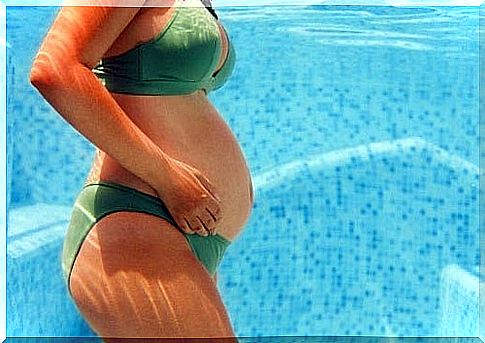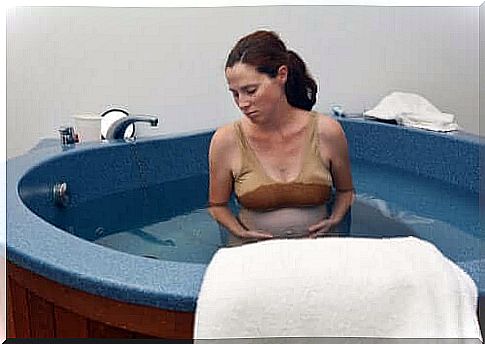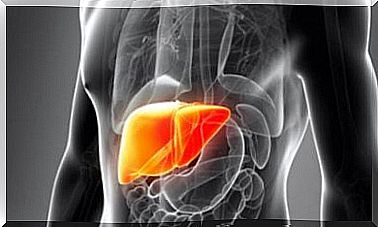Water Birth: What Is Worth Knowing About It?

Water birth is an effective way of reducing the pain a woman experiences during childbirth. This is a good variation of natural childbirth as the risk of complications is minimal.
In recent years, more and more women are choosing different types of childbirth. Not only home birth is becoming popular, but also water birth . Interestingly, especially the latter type is chosen more and more often, although not many hospitals offer it. Most of them lack the proper equipment to carry it out.
In today’s article, we’ll provide you with the most important information about waterbirth, its benefits, and what you need to consider.
Water birth
According to the Spanish Association of Midwives, “immersion in hot water is an effective method of pain relief during the last phase of the first stage of labor”. Water birth is the delivery of a baby while the mother’s belly is submerged in water.
Thus, its main goal is to reduce pain. Water immersion is recognized as one of the drug-free treatments for pain, which allows the pregnant woman to maintain greater control.

This method was first tested in Great Britain. Scientists found such a high efficiency of such a procedure that they postulated that immersion in water should be available in all hospitals and clinics.
Unfortunately, the situation is not perfect in most countries. In other words, most public hospitals do not have dedicated birthing pools or the equipment they need, such as wireless cardiotocography systems.
What is a water birth like?
First of all, in order to be able to carry out such a birth, you must have the necessary equipment. The attending physician and the midwife must also be present.

- The water temperature should be 37 ° C. If it is lower, the woman will not be able to relax. On the other hand, if it is higher, it may be of no use. A pregnant woman should not be in the water for more than 90 minutes. After this time has elapsed, he must leave it, wait a while, and then re-enter.
- The water should cover the woman’s belly. In other words, it should reach up to her chest.
- Moreover, it would be best if she entered the pool when the vaginal opening ranges from 3 to 5 centimeters. However, there is no evidence whatsoever as to what is really the best moment. Immersion is advisable for the opening stage. Many women prefer not to give birth while they are in the water.
- All the necessary equipment must be at hand. For example, a wireless monitor must be available to check that your baby is healthy. If it is there, the doctor may ask the mother if she wants to give birth to the baby in water or if she prefers to get out of it.
- Even if the mother chooses to stay in water, there is no evidence that this type of delivery is better than having a baby out of water. Just in case, it is good to know that the child breathes through the umbilical cord until it is cut. Therefore, you do not have to worry that your baby will drown.
Advantages of water birth
According to the International Union of Midwives, water birth has the following benefits:

- Better relaxation of the perineum, vagina and cervix.
- It allows you to move around and change positions that aid the descent of the fetus (for example, squatting or kneeling).
- Hydrotherapy can shorten the expansion phase.
- The fetus feels better when the mother is relaxed because more oxygen reaches the placenta.
- This type of labor increases your relaxation due to weightlessness. In addition, moderate vasodilation appears in the water, which lowers blood pressure and raises the mother’s heart rate, bringing more oxygen to the uterus and fetus.
- When it comes to giving birth, water facilitates the transition of the baby from being in the amniotic fluid to the outside world.
- In most cases, it is possible to have a natural birth without anesthesia by relaxing and reducing the pain.
What are the risks of waterbirth and its disadvantages?
There are several disadvantages to this type of delivery, including:
- Increased risk of bleeding after the birth.
- In the event of any complications, the woman must get out of the pool to receive medical attention.
- Getting in and out of the water can be unpleasant.
Summary
Water birth seems to have more advantages than disadvantages. However, it all depends on the pregnancy in question, whether it is at risk or if any complications arise. In this case, the gynecologist will decide whether this type of delivery is possible.
In addition, water birth has another advantage. The expectant mother is able to make decisions about how her baby is to be born. This possibility increases her sense of self-confidence during childbirth.









